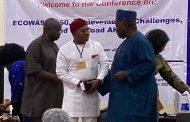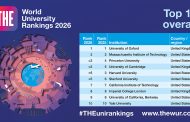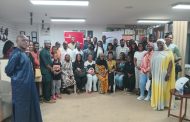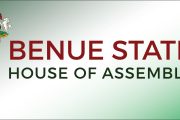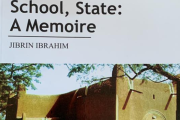This article was not sent to Intervention. Rather, it was picked from the social media because it fits into the today’s theme for Intervention. It doesn’t look like the author put his or her name name. We would be happy to add the name should the author be keen on putting his or her name. Enjoy the piece within the larger conversation!
There’s a dangerous tendency in public discourse to blame Nigerian lecturers for the poor quality of graduates flooding the labor market. It’s easy to point fingers at those standing in front of the classrooms without pausing to examine the crumbling foundation beneath their feet. A recent conversation between friends laid bare this blame game, but a closer look at the hard facts reveals a different, more complex, and far more damning truth.
Nigerian universities are not just underperforming; they are hemorrhaging at every level. The real tragedy lies not in the supposed inefficiency of lecturers but in the institutional rot that has turned these once-proud institutions into shadows of themselves.
Start with staffing. Nigeria’s public universities have 77,511 non-academic staff and only 37,504 academic staff. That’s a ratio of more than 2:1 in favor of support personnel, clerks, drivers, administrative aides, many of whom are political appointees or products of nepotism. In an academic environment, the educators should be the backbone, but here they are the underdog.
Of those 37,504 academic staff, only 28,128 are engaged full-time. The remaining 9,376 are part-time lecturers, many on visiting, adjunct, sabbatical, or contract arrangements, most of whom are the most experienced and senior hands. These same hands are recycled across multiple institutions, forced to juggle workloads at three, four, or even five universities just to survive. And yet, Nigeria keeps licensing new universities and launching new programs without recruiting new staff. We’re building castles on quicksand.
Globally, a university’s credibility is anchored on its academic depth. A minimum of 80% of academic staff should ideally have PhDs. In Nigeria, barely 43% do. The rest hold only master’s degrees or first degrees. Our ivory towers have become bottom-heavy, dominated by junior lecturers still climbing their own learning curves. No mentorship, no balance, just a conveyor belt of unqualified educators expected to raise giants.
Then there’s the matter of diversity. Universities are meant to be cosmopolitan knowledge hubs. But in Nigeria, only 2% of lecturers are foreigners. Even worse, 89% of university staff are from the host or nearby states. This turns universities into ethno-cultural enclaves, breeding intellectual monocultures where staff think alike, act alike, and teach alike, depriving students of the richness that comes with diverse perspectives.
And what about student-to-lecturer ratios? The recommended global standard is 1:15. In Nigeria, it’s a staggering 1:103. Some institutions are even worse. The National Open University of Nigeria (NOUN) operates at 1:363. University of Abuja? 1:122. Lagos State University? 1:111. Compare this to Harvard’s 1:4, MIT’s 1:9, or even Saudi Arabia’s King Fahd University of Petroleum and Minerals at 1:9. In Nigeria, one lecturer is expected to engage, guide, assess, and mentor over 100 students. The results, predictably, are catastrophic.
Yet, universities continue to prioritize prestige over purpose. Millions are spent on erecting grandiose gates, massive walls, luxury vehicles for top management, while students sit in overcrowded, under-furnished lecture halls and ill-equipped laboratories. Over 1,000 students are crammed into halls built for 600. More than 100 students use labs meant for 20. Toilets? For many, they don’t exist.
The sanitation situation is appalling. 76% of students rely on wells for water. 42% still use pit latrines. A shocking 67% of students, especially those living off-campus, use the bush as a toilet. It is a violation of dignity, health, and basic human rights.
In terms of gender balance, the academic staff is overwhelmingly male, 83%, leaving only 17% female representation. This reinforces the gender gap in academia and deprives female students of much-needed role models.
To make matters worse, the budgetary prioritization is offensive. In this country, 700 ex-militants receive more funding annually than five federal universities combined. Think about that. Institutions meant to shape minds and produce future leaders are given less attention than programs designed to pacify violence.
Library resources are another scandal. Nigerian university libraries are not only inadequate, they’re outdated and still manually operated. Student-to-book ratios are some of the worst globally, forcing learners to rely on decades-old texts or Google searches for assignments that demand depth and critical thinking.
So before you crucify lecturers, ask: what kind of miracle can a teacher perform when they are underpaid, overworked, and unsupported in a system built to fail?
Education is not just one of the United Nations’ Sustainable Development Goals, it is the cornerstone of every thriving society. Yet Nigeria treats it like an afterthought, a box to tick during budget sessions and campaign seasons. How can we be part of the 21st-century economy with 19th-century infrastructure and 20th-century thinking?
The decay of Nigerian universities is not just an academic concern, it is a national emergency. If we don’t arrest this collapse, we are not just failing our youth; we are sabotaging our future.




